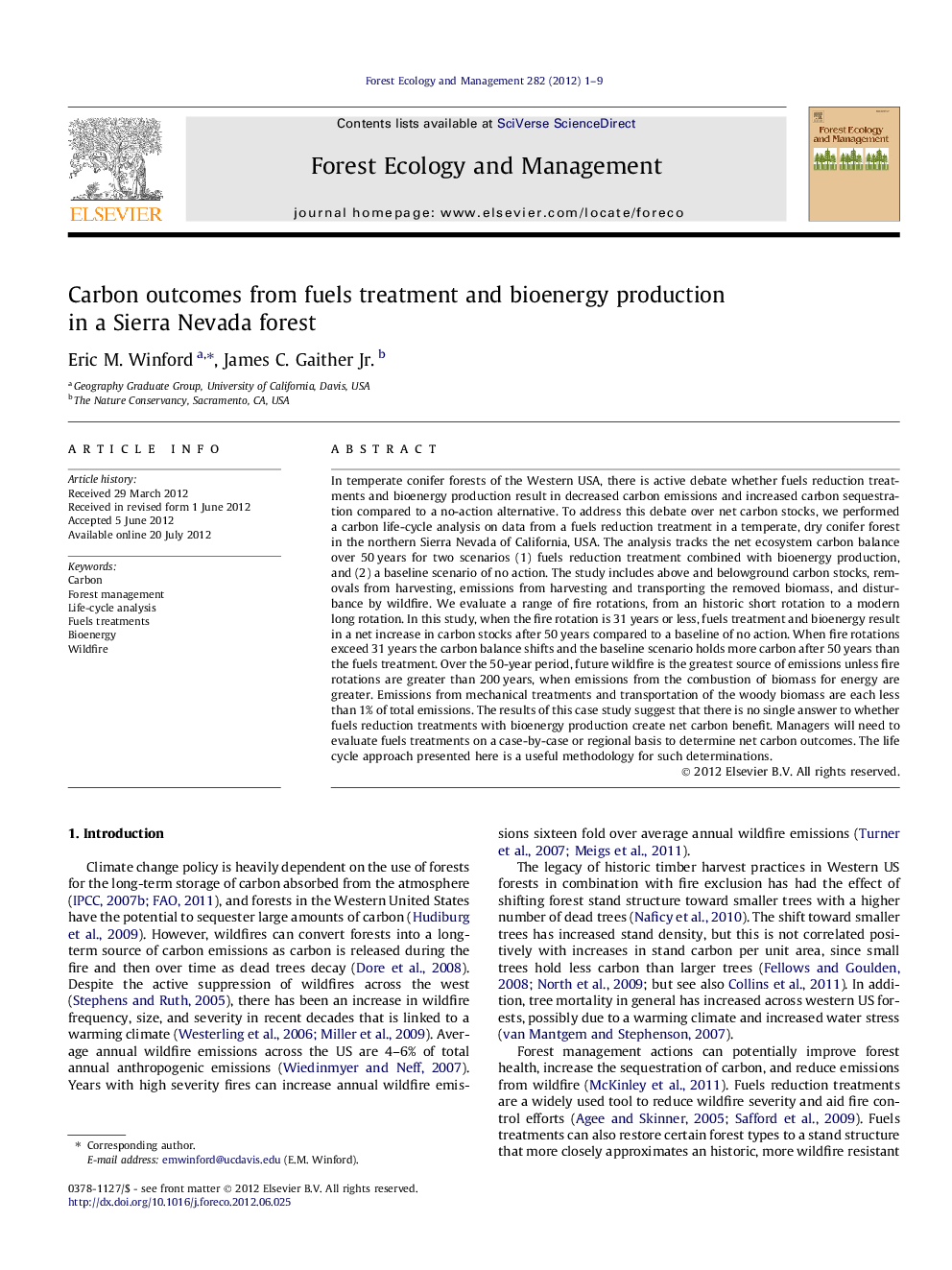| کد مقاله | کد نشریه | سال انتشار | مقاله انگلیسی | نسخه تمام متن |
|---|---|---|---|---|
| 87413 | 159250 | 2012 | 9 صفحه PDF | دانلود رایگان |

In temperate conifer forests of the Western USA, there is active debate whether fuels reduction treatments and bioenergy production result in decreased carbon emissions and increased carbon sequestration compared to a no-action alternative. To address this debate over net carbon stocks, we performed a carbon life-cycle analysis on data from a fuels reduction treatment in a temperate, dry conifer forest in the northern Sierra Nevada of California, USA. The analysis tracks the net ecosystem carbon balance over 50 years for two scenarios (1) fuels reduction treatment combined with bioenergy production, and (2) a baseline scenario of no action. The study includes above and belowground carbon stocks, removals from harvesting, emissions from harvesting and transporting the removed biomass, and disturbance by wildfire. We evaluate a range of fire rotations, from an historic short rotation to a modern long rotation. In this study, when the fire rotation is 31 years or less, fuels treatment and bioenergy result in a net increase in carbon stocks after 50 years compared to a baseline of no action. When fire rotations exceed 31 years the carbon balance shifts and the baseline scenario holds more carbon after 50 years than the fuels treatment. Over the 50-year period, future wildfire is the greatest source of emissions unless fire rotations are greater than 200 years, when emissions from the combustion of biomass for energy are greater. Emissions from mechanical treatments and transportation of the woody biomass are each less than 1% of total emissions. The results of this case study suggest that there is no single answer to whether fuels reduction treatments with bioenergy production create net carbon benefit. Managers will need to evaluate fuels treatments on a case-by-case or regional basis to determine net carbon outcomes. The life cycle approach presented here is a useful methodology for such determinations.
► Fuel treatment carbon stocks were higher with a fire rotation less than 31 years.
► Baseline carbon stocks were higher with a fire rotation greater than 31 years.
► Wildfires were the greatest source of emissions.
► Emissions from harvest and transport were not a large source of emissions.
Journal: Forest Ecology and Management - Volume 282, 15 October 2012, Pages 1–9